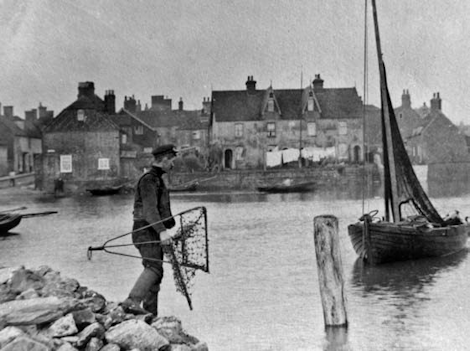Emsworth and Warblington
Links
Emsworth Online - Everything you ever wanted to know about Emsworth on this very comprehensive site. Don’t bother with my page - just go to this site.
Emsworth.org.uk - a rival site to Emsworth Online I would have thought.
A short history of Emsworth and Warblington - by A.J.C Reger - actually quite a long history and detailed book. Sort of formed around particular family history but pretty detailed. A pdf of a book.
Emsworth Walks.org- some walks in the area plus other information
Wikipedia- this article probably tells you most of what there is to know about these two small places
Not a lot here.
A Vision of Britain (Warblington) - Not a lot here, but there are a few statistics and maps.
Emsworth Oyster Fleet - a page on the Hampshire History site with a comprehensive history of oyster fishing in the town.
Warblington Castle - from the same site
Warblington Watch Huts - ditto
Family Search - a useful summary of genealogical resources for Emsworth. There is also a page on Warblington.
Francis Frith - some old photos and maps to buy
British History Online - pages on Warblington and Emsworth from the 1908 History of the County of Hampshire
The Emsworth Museum - a good place to go for any information to do with the history of the area.

Emsworth is now larger than Warblington which now seems to be not much more than a station and a church. However, it used to be the other way round, with Emsworth being part of Warblington and being too small to rate a mention in the Domesday Book in its own right. The wonderful description below from 1607 describes its location on the estuarine waters of the Solent just to the east of Portsmouth. The two islands mentioned, together with the much larger Isle of Wight, shield it from the open waters of the English Channel.
“Warblington, a goodly faire house belonging some-times to the Earles of Salisbury, but now to the family of the Cottons, Knights. Before which there lie two Islands, the one greate, named Haling, the other lesse, called Thorney of thornes there growing, and both of them have their severall parish church. In many places along this shore, of the sea waters flowing up thither is made salt of a palish or greene collour, the which by a certain artificious devise they boile until it bee exceeding white. And of this sea or Bay-salt, and not of ours made out of salt springs, is Saint Ambrose to be understood when hee writeth thus: Consider wee those things which are usuall with many very grace-full: namely, how water is turned into salt of such hardnesse and solidity that often-times it is hewed with axes. This in the salts of Britaine is no wonder, as which carrying a shewe of strong marble do shine and glitter againe with the whitenesse of the same metall, like unto snow, and bee holesome to the bodie &c" William Camden Britain, or, a Chorographicall Description of the most flourishing Kingdomes, England, Scotland, and Ireland 1607


According to the excellent local website for Emsworth the name derives from worth, meaning an enclosure such as a farm or hamlet enclosed by a palisade, belonging to someone named Emil or Emel.
Being on the sea, as it is, the town has, of course, been very involved with fishing and with sailing generally. At one point it was an important port, but now it seems to be more of a leisure sailing centre. A mill was built using the tidal waters for its energy, and oyster fishing was once a very important industry until contaminated by sewage. Although new sewers were built the industry was damaged and now just lingers on.
It’s a very pretty little town now, whose entire centre has been designated a conservation area. P. G. Wodehouse was once an inhabitant of the town. No doubt those who live there now are the more affluent, commuting into Portsmouth and Chichester, but back when my ancestors were living there it was a working small town - fishermen, sailors, brickmakers (there was a brickmaking industry there for a time), millers - people like those gathered outside the pub in the lovely old photograph above left. So it’s not only the now trendy inner city areas of big towns like London that have completely changed their character over the years - it’s the little country towns too. In fact it is becoming apparent that this is a general theme of development. Once poor, undesirable areas are now fashionable and desirable. Once grand city houses are converted into flats and apartments and sometimes become squalid and undesirable.




And, as if to underline this, Emsworth seems now to have a thriving artistic community. Three of the works of local artists, depicting the town are shown below.

Warblington Church
From my recent visit to Emsworth and Warblington I have a memory of a church, pretty much out on its own, surrounded by a very large graveyard, but this could be a false memory. The church is dedicated to St. Thomas a Becket and dates back to the 12th century. The ruins of the castle are close by.
The pictures below are of Warblington Church from various points in its history. The two modern photos are mine






